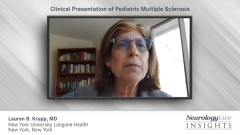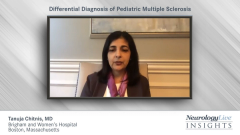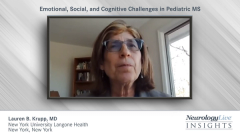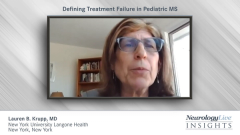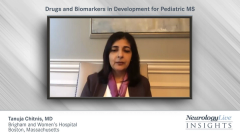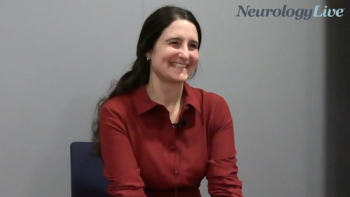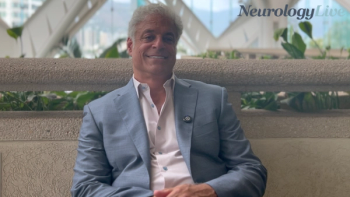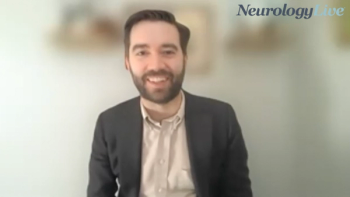
Defining Treatment Failure in Pediatric MS
Lauren B. Krupp, MD considers how treatment failure in pediatric multiple sclerosis may be defined as disease relapse, new or enlarging legions, inability to tolerate treatment, or lack of adherence.
Episodes in this series

Lauren B. Krupp, MD: One of the questions is, how do we define treatment failure? That can be defined in a variety of ways. There is certainly the way the neurologist looks at it, which is a relapse for sure is a treatment failure; new lesions may be a treatment failure, enlarging lesions may be a treatment failure. Also, an inability to either tolerate the medication or take the medication is another problem. We want to try to avoid treatment failure. The best way to do that is to closely monitor patients. When I begin a disease-modifying therapy, I make sure there’s a baseline MRI near the time the treatment is started. I like to get a follow-up MRI, generally 6 months later. After that, I tend to do brain MRIs annually. Depending on the other problems the patient may have, I will include spinal cord imaging sometimes every other year, sometimes annually depending on the circumstances. All of that is of course modulated by the financial realities of insurance, and MRI availability, and so forth. Monitoring is important in terms of making sure the disease is well controlled. One new lesion over 3 or 4 years to me is not necessarily an example of breakthrough disease. However, 3 or 4 lesions over 6 to 12 months, in my view, is a suboptimal treatment response. Some of that is controversial. What I think is clearer is that when a child has a relapse despite compliance with disease-modifying therapy, that’s something we want to avoid.
In my experience, the initial therapies to control MS [multiple sclerosis]—the injectables and the platform therapies—were suboptimal. I saw a lot of children with MS in the period between 2000 and 2010; these kids would relapse frequently on 1 interferon. We would switch them to glatiramer acetate, and they would get new lesions. Then we would switch them to another interferon, and they would relapse again; it was common for that to happen. In the paradigms study, we have numbers to show us that those on interferon beta-1a relapse at a rate of over 0.66; that means you’re having a relapse almost more than every other year while on treatment. It was not an uncommon situation. In contrast, the newer therapies are not associated with that kind of relapse rate. What was in the paradigms study, a relapse rate of 0.12, or a relapse less than once every 8 years, is much more consistent with what I consider to be the modern era and what my clinical practice would be consistent with.
Transcript Edited for Clarity
Newsletter
Keep your finger on the pulse of neurology—subscribe to NeurologyLive for expert interviews, new data, and breakthrough treatment updates.


